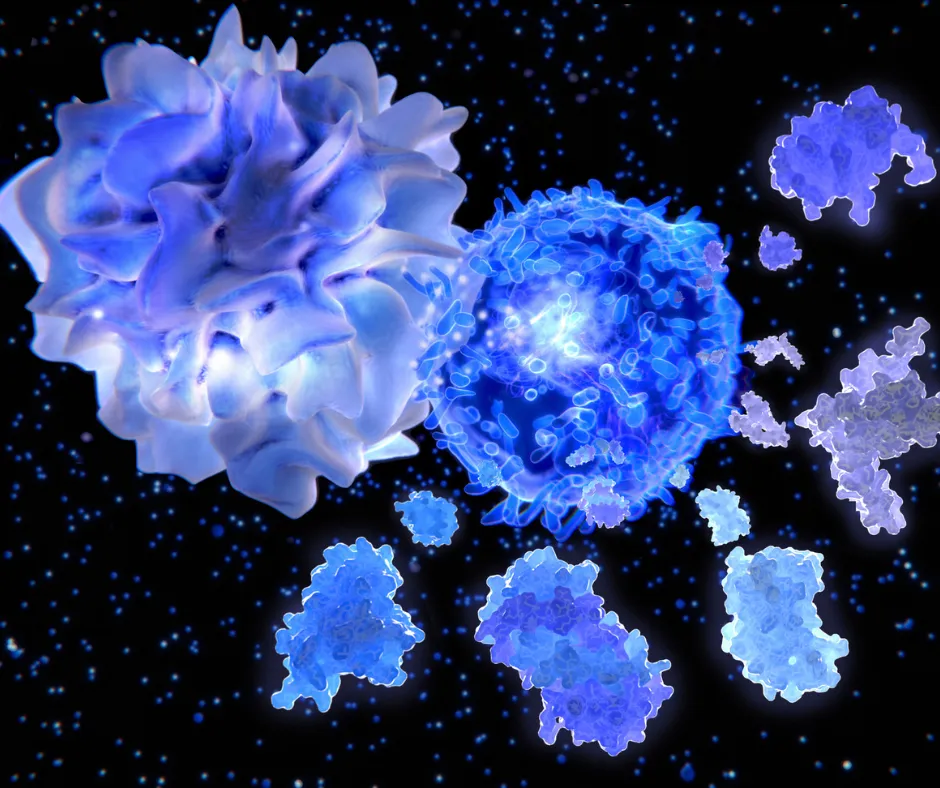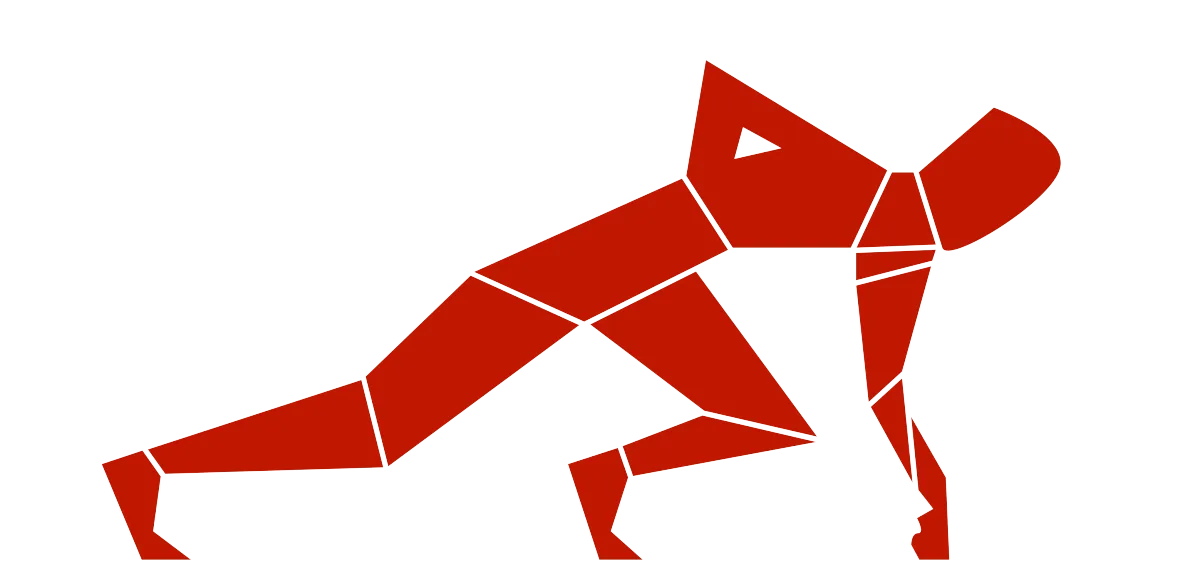Latest News
Begin Your Journey
You have sacrificed your health and physique to chase your career and start your family. That is okay.
But now, it is time to reclaim your health and Fitness. Get Fit, Get Lean, Get Primal!

Managing Autoimmune Diseases: A Holistic Approach Based on Environmental Medicine
Autoimmune diseases represent a complex interaction between genetic predisposition, environmental triggers, and lifestyle factors. The traditional focus has often been on suppressing the immune response with medications. However, a more comprehensive and sustainable approach considers the role of environment, particularly light, water, and magnetism, in optimizing health and mitigating autoimmune conditions.

This framework integrates modern insights from circadian biology, quantum health, and evolutionary medicine, providing a roadmap for managing autoimmune diseases.
Understanding Autoimmune Disease Through an Environmental Lens
Autoimmune diseases occur when the immune system mistakenly attacks healthy tissues, often due to chronic inflammation and immune dysregulation. The key to managing these conditions lies in addressing the root causes, which are frequently linked to environmental and lifestyle factors:
1. Circadian Disruption: Modern living with artificial lighting and screen exposure disrupts natural circadian rhythms, impairing immune function.
2. Mitochondrial Dysfunction: Inefficient mitochondria lead to energy deficits and heightened inflammatory responses.
3. Leaky Gut Syndrome: A compromised gut lining allows toxins and undigested food particles into the bloodstream, triggering systemic inflammation.
4. Electromagnetic Field (EMF) Exposure: Chronic exposure to artificial EMFs can increase oxidative stress and disrupt cellular communication.
Strategies for Managing Autoimmune Diseases
1. Optimize Circadian Rhythms
The circadian system regulates the body’s immune response. Disruptions in this system can exacerbate inflammation and autoimmune activity.
Action Plan:
Morning Sunlight exposure: Spend at least 20 minutes outdoors in the early morning to reset your internal clock and regulate hormones like cortisol and melatonin.
Limit Blue Light Exposure: Use blue light blocking glasses or screen filters in the evening to protect melatonin production.
Consistent Sleep Schedule: Aim for 7-9 hours of sleep per night, ensuring it aligns with natural light-dark cycles.
2. Support Mitochondrial Health
Healthy mitochondria are essential for energy production and reducing inflammation.
Action Plan:
Cold Thermogenesis: Incorporate cold showers, ice baths, or cryotherapy to improve mitochondrial efficiency and reduce inflammatory markers.
Infrared and Red Light Therapy: These therapies enhance mitochondrial function and promote tissue repair.
Nutrient-Dense Diet: Focus on foods rich in mitochondrial-supporting nutrients, such as omega-3 fatty acids, magnesium, and CoQ10.
3. Heal the Gut
A healthy gut barrier is crucial in preventing systemic inflammation and autoimmune flare-ups.
Action Plan:
Eliminate Trigger Foods: Common culprits include gluten, dairy, and processed foods. An elimination diet can help identify specific triggers.
Support Gut Microbiome: Include fermented foods like sauerkraut and kefir or consider high-quality probiotics.
Increase Collagen and Gelatin: These support gut lining repair and improve intestinal permeability.
4. Reduce EMF Exposure
Artificial EMFs can disrupt cellular communication and exacerbate autoimmune symptoms.
Action Plan:
Practice Grounding: Spend time barefoot on natural surfaces such as grass or sand to reconnect with the Earth’s natural magnetic field.
Limit EMF Sources: Turn off Wi-Fi at night, use wired connections where possible, and avoid keeping electronic devices near your body.
Use EMF Shields: Protect your living space with EMF-reducing technologies like Faraday cages or specific fabrics.
5. Anti-Inflammatory Diet and Lifestyle
Chronic inflammation underpins most autoimmune conditions. Reducing inflammation can help manage symptoms and prevent progression.
Action Plan:
Adopt a Ketogenic or Low-Carb Diet: Reducing carbohydrate intake can lower systemic inflammation and improve mitochondrial function.
Incorporate Anti-Inflammatory Foods: Turmeric, ginger, leafy greens, and fatty fish should be staples in your diet.
Intermittent Fasting: Fasting periods give the body time to repair and reduce inflammation.
6. Hormonal Balance
Hormones like cortisol, insulin, and leptin play a pivotal role in immune regulation.
Action Plan:
Regulate Cortisol Levels: Practice stress management techniques such as mindfulness, yoga, and deep breathing exercises.
Enhance Insulin Sensitivity: Time meals appropriately and avoid refined carbohydrates to stabilize blood sugar levels.
Improve Leptin Sensitivity: Eat protein-rich breakfasts and avoid late-night snacking.
Implementing a Comprehensive Plan
Managing autoimmune diseases is not about isolating one strategy but integrating multiple approaches tailored to individual needs. Start by identifying key environmental and lifestyle factors contributing to your condition and implementing these changes gradually.

Common Myths and Misconceptions
1. "Autoimmune diseases are purely genetic."
While genetics play a role, environmental factors and lifestyle choices significantly influence disease onset and progression.
2. "Supplements can replace natural sunlight."
Vitamin D3 supplements help, but they lack the broader benefits of full spectrum sunlight, such as circadian regulation and mitochondrial activation.
3. "EMFs are harmless."
Chronic exposure to artificial EMFs has been shown to increase oxidative stress and may exacerbate autoimmune conditions.
4. "Diet alone can cure autoimmune diseases."
Diet is critical, but a holistic approach addressing light exposure, stress management, and environmental factors provides the best outcomes.
By adopting these strategies, individuals with autoimmune conditions can take control of their health, reduce symptoms, and improve their quality of life. This holistic framework is designed to empower those on their journey toward optimal wellness.
REFERENCES
Here’s a list of reading resources that support the strategies and concepts discussed for managing autoimmune diseases. These readings provide robust scientific backing for the strategies and principles discussed, ensuring a well-informed approach to managing autoimmune diseases holistically.
Circadian Rhythms and Light Exposure
1. Czeisler, C. A., & Gooley, J. J. (2007). "Sleep and circadian rhythms in humans." Cold Spring Harbor Symposia on Quantitative Biology.
https://pubmed.ncbi.nlm.nih.gov/18419318/
2. Roenneberg, T., et al. (2012). "Social jetlag and obesity." Current Biology.
https://pubmed.ncbi.nlm.nih.gov/22578422/
Mitochondrial Health
3. Wallace, D. C. (2013). "Mitochondrial bioenergetics in human health and disease: The biology of mitochondrial function." Nature Reviews Genetics.
https://pubmed.ncbi.nlm.nih.gov/24105273/
4. Pollack, G. H. (2013). "The Fourth Phase of Water: Beyond Solid, Liquid, and Vapor."
https://www.pollacklab.org/research
Gut Health and Leaky Gut Syndrome
5. Fasano, A. (2012). "Leaky gut and autoimmune diseases." Clinical Reviews in Allergy & Immunology.
https://pubmed.ncbi.nlm.nih.gov/22109896/
6. Turner, J. R. (2009). "Intestinal mucosal barrier function in health and disease." Nature Reviews Immunology.
https://pubmed.ncbi.nlm.nih.gov/19116627/
Electromagnetic Fields and Health
7. Belyaev, I., et al. (2005). "Non-thermal biological effects of microwaves on bacteria and human cells." Bioelectromagnetics.
https://pubmed.ncbi.nlm.nih.gov/16101492/
8. McCraty, R., et al. (2015). "The impact of Earth's magnetic field on human health and behavior." Global Advances in Health and Medicine.
https://pubmed.ncbi.nlm.nih.gov/26026166/
Cold and Heat Therapy
9. Lee, P., et al. (2014). "Brown adipose tissue and cold-induced thermogenesis in humans." New England Journal of Medicine.
https://pubmed.ncbi.nlm.nih.gov/24597867/
10. Brenner, M., & Hearing, V. J. (2008). "The protective role of melanin against UV damage in human skin." Photochemistry and Photobiology.
https://pubmed.ncbi.nlm.nih.gov/18435612/
Hormonal Regulation
11. Friedman, J. M. (2014). "Leptin and the regulation of body weight." Annual Review of Medicine.
https://pubmed.ncbi.nlm.nih.gov/24387237/
12. Shulman, G. I. (2000). "Cellular mechanisms of insulin resistance." Journal of Clinical Investigation.
https://pubmed.ncbi.nlm.nih.gov/10608558/
Stress and Cortisol Management
13. McEwen, B. S. (2008). "Central effects of stress hormones in health and disease: Understanding the protective and damaging effects of stress and stress mediators." European Journal of Pharmacology.
https://pubmed.ncbi.nlm.nih.gov/18501202/
14. Chrousos, G. P. (2009). "Stress and disorders of the stress system." Nature Reviews Endocrinology.
https://pubmed.ncbi.nlm.nih.gov/19488073/
Fasting and Inflammation
15. Longo, V. D., & Mattson, M. P. (2014). "Fasting: Molecular mechanisms and clinical applications." Cell Metabolism.
https://pubmed.ncbi.nlm.nih.gov/24440038/
16. Harvie, M., et al. (2011). "The effects of intermittent or continuous energy restriction on weight loss and metabolic disease risk markers." International Journal of Obesity.
https://pubmed.ncbi.nlm.nih.gov/22021050/
Get The Primal Physicality Guide
Learn how to get into Primal Physical Shape even if you have neglected your body for years.


For further information email [email protected] or call 0452 478 487

Links
Subscribe to my newsletter
Legal notice
Cookies policy
Privacy Policy
Terms of use
© 2025 PrimalThenics
Serving Newmarket, Wilston, Ashgrove & surrounds